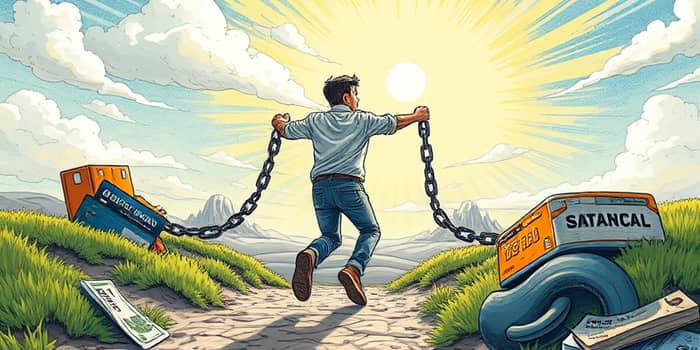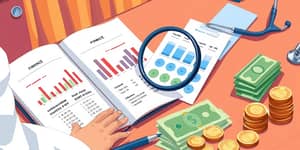
Every year, millions of households find themselves trapped in a repeating pattern of borrowing, repayment, and emergency reborrowing. This cycle creates both financial strain and emotional stress, making it seem impossible to gain lasting stability. In this article, we explore the root causes of recurring debt, the psychological factors that keep people locked in this loop, and the evidence-based strategies that can empower readers to achieve true freedom from financial burdens.
The debt cycle describes a pattern in which individuals borrow to cover basic expenses, make only minimum payments, and then borrow again when new costs or emergencies arise. As interest accumulates, balances grow and the cycle intensifies. Recent data shows that average credit card APRs exceed 20% in 2025, and over 60% of Americans lack the emergency funds to cover a $1,000 expense. On a national scale, the government’s debt-to-GDP ratio stands at 120.8%, highlighting the prevalence of pervasive borrowing at both micro and macro levels.
At the macroeconomic level, a credit boom can fuel growth temporarily, but excessive leverage leads to a painful deleveraging phase of the cycle. Defaults increase, asset prices fall, lending tightens, and unemployment rises. Understanding this larger cycle helps frame personal debt challenges as part of a wider economic dynamic.
Debt often feels like a tool for progress, enabling purchases that seem beyond reach. However, lifestyle inflation and silent wealth drains—such as unnoticed subscription services and recurring fees—can erode financial resilience. Even when incomes rise, spending habits can expand in tandem, leaving households vulnerable to any unexpected shock.
Furthermore, insufficient emergency savings to cover unexpected events forces many to rely on credit cards or personal loans when crises hit. This lack of a financial cushion perpetuates dependency on high-cost borrowing and makes every small expense a potential setback.
Research shows that financial literacy, self-control, and mental budgeting are critical determinants of debt outcomes. Individuals with strong self-control are more likely to plan, monitor, and stick to goals, resulting in higher net wealth and improved financial stability.
Conversely, impulsive spending and poor budgeting skills can quickly undo the best intentions. Mental budgeting techniques and self-discipline strategies—such as allocating cash for specific expenses or using spending trackers—help keep overspending in check and reduce reliance on credit for day-to-day needs.
The global economy remains uneven in its recovery from recent shocks. While corporate credit conditions have improved thanks to stronger earnings and lower policy rates, household credit continues a slow correction. Inflation has eaten into purchasing power, and many families are still in the process of deleveraging.
Geopolitical tensions and supply-chain disruptions add further uncertainty. As central banks adjust rates to manage inflation, borrowers face volatile interest costs. In this climate, building robust personal finance practices is more important than ever.
Escaping the debt spiral requires a multifaceted approach that combines knowledge, discipline, and practical tactics. Below are fundamental pillars for lasting financial freedom:
Once the groundwork of financial knowledge and behavioral habits is laid, targeted repayment strategies can accelerate progress. Two popular and effective methods include:
In addition, debt consolidation—combining multiple obligations under a lower interest rate—can simplify payments and reduce charges. When possible, proactively negotiate with creditors to lower APRs or agree to settlement terms.
Breaking free from debt does more than reduce balances; it enhances mental health and personal relationships by removing the daily stress of financial uncertainty. Confidence grows when goals are achieved, leading to healthier decision-making and renewed focus on long-term aspirations.
Financial freedom fosters a sense of control and empowerment, enabling individuals to invest in their future, support loved ones, and pursue meaningful experiences without the weight of constant money worries.
Overcoming the debt cycle is a challenging but achievable journey. By understanding the mechanisms that keep you trapped, strengthening self-control, and applying evidence-based strategies, you can transform your financial trajectory. Start today by educating yourself, setting clear goals, and taking deliberate steps toward increased savings, targeted debt repayment, and true lasting freedom.
References













